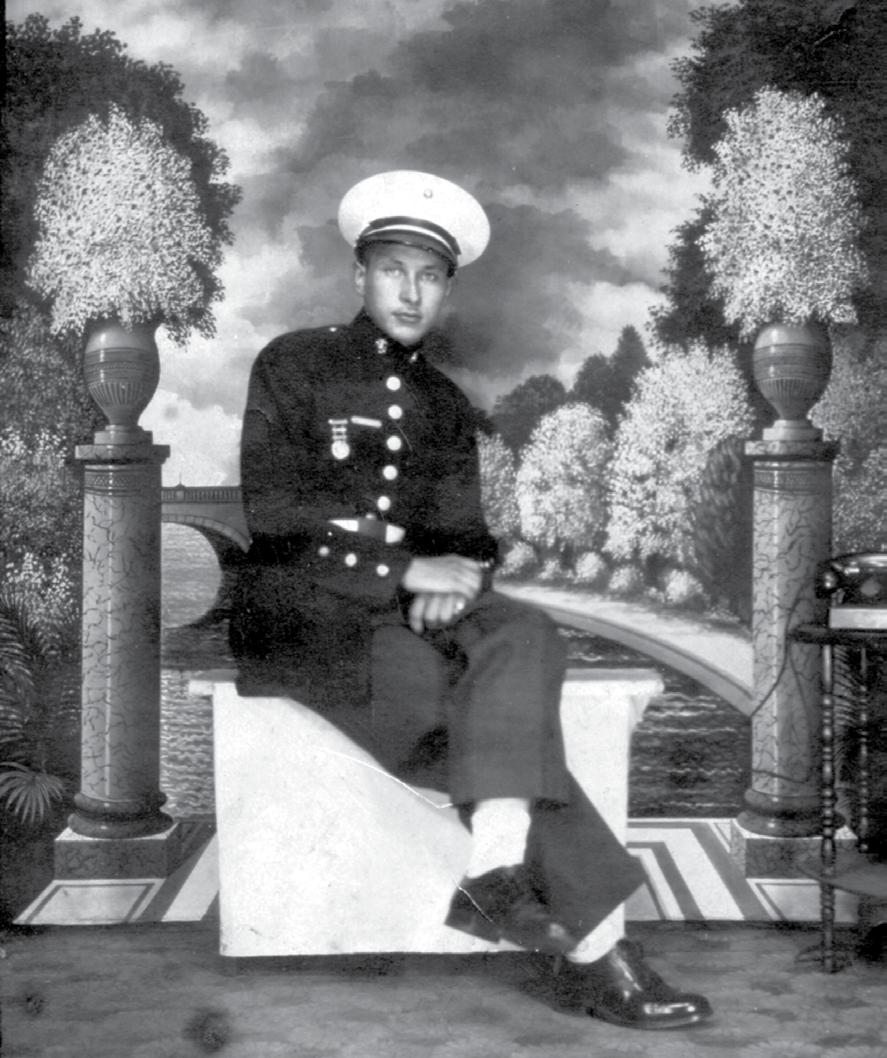
4 minute read
Semper Fi: The Montford Point Marines
Semper Fi: The Montford Point Marines
By John Toler
Advertisement
Segregation in the U.S. military did not end until 1948, with President Harry Truman’s Executive Order 9981, fully integrating the armed services. Until then, everything from training, military assignments and quartering was determined by race.
While many are familiar with the story of the Tuskegee Airmen, the African American fighter pilots and ground crews whose story was told in books and the 2012 movie, Red Tails, less is known about the Montford Point Marines, their counterparts in the U.S. Marine Corps.
Fauquier County natives Roland I. Tapscott and his younger brother Stanley were Montford Point Marines. They lived in the Warrenton-Catlett area when the U.S. entered World War II. In early 1942, Roland was drafted by the Army and ordered to report to Fort Myer for a physical.
When he got off the bus in Washington, he stopped by a kiosk manned by a Marine recruiter and signed up. What he didn’t know was that only since 1941 were African Americans allowed to serve in the USMC.
A month later, Tapscott arrived at Montford Point, a segregated training facility outside Camp Lejeune, N. C. The unit was designated the 51st Composite Defense Battalion, a unique designation that allowed the men to be trained separately from White Marines.
Conditions were deplorable. Barracks were dilapidated former Civilian Construction Corps huts, in which 40 men were quartered. Initially, there were no latrines, which recruits had to build.
Worse was the overt racism, from the civilian communities around the base and White officers and NCOs assigned to train them. Making a raw recruit into a Marine was tough, but added to that were open hostility and constant questioning of the Montford Point trainees’ capabilities.
“It was clear that they didn’t want Blacks in the Marine Corps,” Tapscott said in an interview in 2012. “It was disgraceful.”
Adequate training also was lacking. Tapscott’s platoon spent only three days on the rifle range, firing .22 caliber rifles instead of the M-1 rifles they were expected to carry into battle.
In spite of his brother’s experiences at Montford Point, Stanley Tapscott enlisted in the USMC, arriving for training in December, 1944. “By then there were Black drill instructors, and they had to be tougher than White DIs if they wanted to keep their jobs,” he recalled. “Every movement in camp was to be done at a run, and anyone caught walking was subject to punishment.”
Before completing training, Stanley suffered a serious bacterial infection, and was separated from the Marine Corps and sent home. He is still mystified by the action, and the fact he was given an honorable discharge, rather than a medical discharge.
Initially, those who completed training were enlisted in the Marine Reserve and assigned to inactive duty. That changed with the critical shortage of manpower as the war progressed.

Originally, White Drill Instructors handled the training of recruits at Montford Point. Later, African American Marines served as DIs, as shown in this platoon photo taken in 1943.

The only time Pvt. Tapscott got to wear his Marine Corps dress blue uniform was for this portrait, taken in July 1943 while he was on the only leave he took while in the Corps.

The Montford Point Marines Congressional Gold Medal
Of approximately 20,000 African Americans trained at Montford Point during WWII, nearly 13,000 were sent to fight in the Pacific. The remainder served stateside as stewards at various headquarters or worked at supply or ammunition depots.
From Montford Point, Pvt. Roland Tapscott was assigned to the Marine base at San Diego, and from there to New Caledonia in the South Pacific as a member of the 1st Marine Division’s 21st Replacement Company.
On August 13, 1943, his unit landed at Guadalcanal, which was still unsecured. Leaving their transport ship in two smaller boats, they were headed to Banika, about 60 miles away in the Russell Islands, when Japanese aircraft attacked. They were strafed by Japanese fighters, and witnessed the sinking of the USS John Penn hit by aerial-dropped torpedoes.
Banika was a forward supply base, where much of the materiel, fuel and equipment used by the 1st Marine Division were handled. Tapscott was assigned to a trucking company, driving bulldozers and operating cranes.
Living conditions were primitive, with Marines sleeping in two-man pup tents. There was always the threat of an enemy attack, and bombings and strafing continued for several months. The work was challenging, often lasting 24 hours a day for long periods of time. The war ended after two atomic bombs were dropped on Japan in August, 1945. Due to its remote location and the slow drawdown of troops and supplies in the Pacific, then-Cpl. Tapscott did not start for home until Dec. 1, 1945. He finally made it back to Montford Point and was honorably discharged on Jan. 11, 1946.
Tapscott married Nettie Sue Stevens in 1946, and the couple lived in Washington, D.C., where he started a 30-year career as a civilian transportation and supply management officer for the Navy. They moved to Warrenton in 1962, and built a new home on Frytown Road. He died in 2014 at 92. His brother Stanley, who drove a taxi in D.C. for fifty years, passed away in 2017 at age 91.
Back home in Fauquier, Roland Tapscott was a community leader, serving on town and county boards and commissions and worked in the Civil Rights movement. He was instrumental in creating the Fauquier Housing Corporation and the Fauquier Veterans Memorial.
The Montford Point Marines finally received special recognition for their service on Nov. 23, 2011, when President Barack Obama awarded the Congressional Gold Medal to the estimated 400 surviving Montford Point veterans.
The medals bore the inscription, “For outstanding perseverance and courage that inspired social change in the Marine Corps, 2011.”










